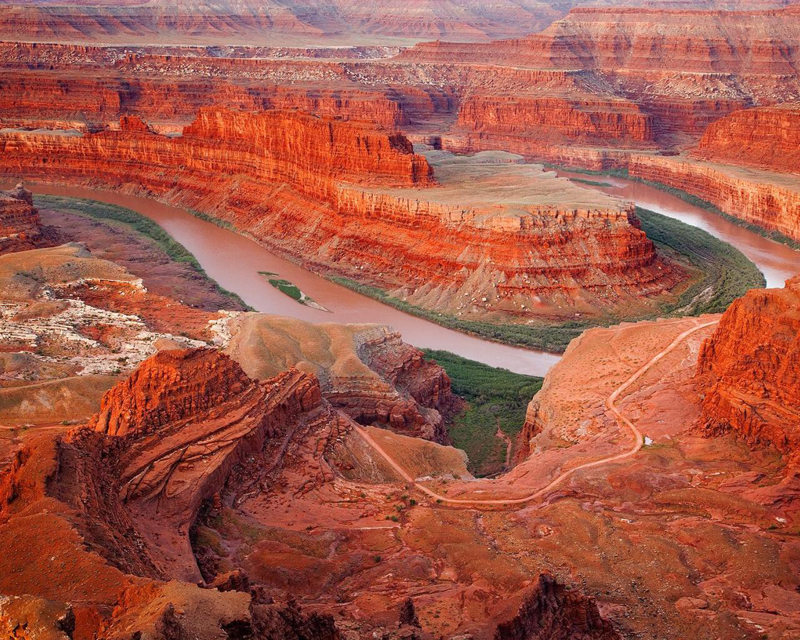Mitt Romney is proposing to end a century of federal control over oil and gas drilling and coal mining on all government lands including national parks.
- Bryce Canyon National Park: A strip coal mine is currently being proposed on Bureau of Land Management lands ten miles from the park, but the National Park Service warned that it would “likely result in negative impacts to park resources and visitors” and especially to air quality and scenery. Under the Romney energy plan, the state of Utah would be responsible for permitting and overseeing the new mine. Chances are it would be permitted, as Utah already gave the go-ahead to a coal mine right next to the proposed one.
- Arches National Park: The final hours of the George W. Bush presidency saw the issuance of 77 oil and gas leases very close to national parks, including Arches. In January 2009, new Interior Secretary Ken Salazar canceled the leases, saying that they had been rushed. But that decision is not permanent — if and the oil and gas industry proposed drilling there again, these and other leases on the edges of Arches could move forward. And the state of Utah would probably accept those industry demands, since its governor and legislature this year called for title to all 30 million acres of public lands to “help foster economic development.”
- Theodore Roosevelt National Park: North Dakota is ground zero for the Bakken oil boom, which is pressing up against this national park where President Theodore Roosevelt developed much of his conservation ethic. Already drilling rigs can be seen from within the park. And even more could be built if aproposed bridge is permitted that could open up even more of the adjacent Little Missouri Grasslands (managed by the Forest Service) to oil and gas drilling.
- Grand Teton National Park: This park borders the Bridger-Teton National Forest, home to significant natural gas resources. Currently the Forest Service is determining whether to allow the drilling of up to 136 natural gas wells on its lands, which could have a number of impacts on the park. Grand Teton National Park’s superintendent expressed concerns about “degradation of visibility” from the project, and other officials have worried about impacts on the park’s wildlife. If this decision were turned over to the state under the Romney energy plan, the project could potentially go forward. Wyoming Governor Matt Mead has stated that the company has “valid existing rights.”
Here are five places that could be at risk under a Romney energy plan:
- Grand Canyon National Park: Even though Interior Secretary Ken Salazar protected one million acres around the Grand Canyon from mining last January, the decision applied only to new claims. About 3,500 existing uranium claims may still be valid, which could result in up to 11 uranium mines on Bureau of Land Management and Forest Service lands near the canyon. Under a Romney energy plan, the decision to permit these new mines would be made by the state of Arizona and under its rules and regulations. Arizona Governor Jan Brewer would likely give the go-ahead to new mining, as she called Salazar’s decision in January “excessive and unnecessary regulation.”
- Arches National Park: The final hours of the George W. Bush presidency saw the issuance of 77 oil and gas leases very close to national parks, including Arches. In January 2009, new Interior Secretary Ken Salazar canceled the leases, saying that they had been rushed. But that decision is not permanent — if and the oil and gas industry proposed drilling there again, these and other leases on the edges of Arches could move forward. And the state of Utah would probably accept those industry demands, since its governor and legislature this year called for title to all 30 million acres of public lands to “help foster economic development.”
- Theodore Roosevelt National Park: North Dakota is ground zero for the Bakken oil boom, which is pressing up against this national park where President Theodore Roosevelt developed much of his conservation ethic. Already drilling rigs can be seen from within the park. And even more could be built if aproposed bridge is permitted that could open up even more of the adjacent Little Missouri Grasslands (managed by the Forest Service) to oil and gas drilling.
- Grand Teton National Park: This park borders the Bridger-Teton National Forest, home to significant natural gas resources. Currently the Forest Service is determining whether to allow the drilling of up to 136 natural gas wells on its lands, which could have a number of impacts on the park. Grand Teton National Park’s superintendent expressed concerns about “degradation of visibility” from the project, and other officials have worried about impacts on the park’s wildlife. If this decision were turned over to the state under the Romney energy plan, the project could potentially go forward. Wyoming Governor Matt Mead has stated that the company has “valid existing rights.”
http://bit.ly/RwEuiC

No comments:
Post a Comment